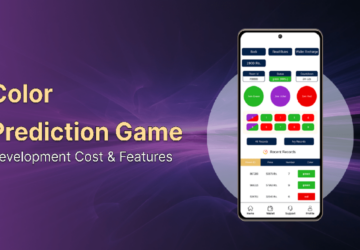To create a PPC account, all that you need is a primary contact and a credit or debit card. Now, this is the easy part. What follows next is knowing the foundational steps for tracking and reporting the performance. But, you may not be able to understand all the nitty-gritty. This is where PPC services come in. So, let’s see the infinite possibilities that PPC promises.
The basics of PPC campaigns
If you are not well-versed with PPC, below are a few reporting metrics that you should know.
- Impressions: The amount of times your ads appeared in the search results
- Clicks: The number of times online users have clicked on your ads
- Click-through rate (CTR): It is the proportion of clicks to impressions. It signifies the percentage of people who clicked your ads
- Average CPC: It is the cost, on average, paid on a per-click basis
- Average position: It represents where your ads appear on the search results page (SERP). The higher the position, the greater is the visibility.
- Conversions: This computes the number of conversion actions such as form-filling or signing up for a newsletter.
- Conversion rate: Signifies the proportion of people who clicked your ads and performed an action – clicks to conversions.
- Quality score: It is an indicator of relevance for your ads, keywords and landing page. A high-quality score can mean a lower CPC and a better ad position.
Now that you know what’s what let’s see how you can make the most out of each PPC campaign.
Target Audience: Pitch your ad to the Right People for optimisation
Without penning down the who, what and when of your campaign, you will be driving around aimlessly. So, put effort into knowing your audiences and target markets.
Below are a few ideas to get by:
Demographics
To create relevant ad content, you should know who is going to look or read it. That is, know who you are writing for. Some of the popular demographic targeting opportunities are driven by:
- Age
- Location
- Gender
- Income
- Education
- Hobbies and Interests
Picking the keywords
More is not necessarily good or better; it can also go downhill for you. Preferably, select a small keyword group that aligns with your ad content. One way of doing so is studying the search terms used, along with the intent, by your target audiences.
The Timing
If you are not speaking or vetting leads 24/7, you should not run your ads round-the-clock either. Hence, choose the days and times, including time zones, most suitable to your audiences.
Creatives: Using the correct messaging
Competitors
Note that your brand exists within a market that comprises other players. When making those creatives for ad content, you should run an extensive search for target keywords. An excellent starting point is looking at the messaging used by competitors.
Value Proposition
Your creative has to align with the brand persona and its proposition. Ask yourself, what are the features and benefits of your product or service? What issues does it resolve? Incorporating the value propositions will come a long way in helping to beat the average CTRs and conversion rates.
Ad relevance
Start by narrowing down the keyword groups. Doing so helps you identify ads that are relevant to the searches made by users. This instils confidence in the users that the results meet their needs.
Other Tips for optimising your PPC Campaign Optimisation
Additional tips to consider that can help deliver appropriate messaging and creatives are A/B testing, Imagery and Call-to-Action (CTA).
Landing Page and User Experience
Check the landing page and user experience for optimisation. The reason is that your website is the face of your company that helps to set that first impression.
A few ideas that can help with landing page optimisation are below.
The landing page content should match the ad purpose
The content on your landing page must align with the objective and purpose of your ad. This helps not only to improve your metrics and conversions but also to increase the Quality Score. An impressive QS ensures that your ads feature in the best possible location – clickable locations.
Landing Page optimisation
The overarching purpose that your landing page should serve is driving up conversions. When doing so, keep in mind the following:
- Email and newsletter signups and form-filling
- Reports and lead downloads or requests
- Links to other websites
- Social media
Social Proof
With intruders and predators scouring for a quick buck, several ads can be fake or distrustful. Hence, you must prove your credibility and trustworthiness. You can do so by incorporating:
- Reviews
- Testimonials
- User-generated content
Other optimisation strategies
Other tips that can help fine-tune your landing page are website speed (a load time of less than 3 seconds), aesthetics and content value.
Measurement and Reporting
What’s valuable about ppc stand for campaigns is the ability to provide detailed measurements and report performances. A good starting point is to revisit the data collection processes and uncover opportunities for improvement. This is not a simple task, so if you are not sure that you can perform it properly, you can always go with trusted PPC marketing companies that will do the heavy lifting for you.
A few ideas that can help optimise reporting are:
Key Performance Indicators
These offer a better idea of which actions work and those that do not. With that said, you can shift the focus to activities that are garnering results. The result is cost savings and more leads, for starters.
Tracking Accuracy
Make sure that your pixels and parameters are proper. Parameter tracking offers insights into which keywords, displays and applications drive the most conversions.
Pinpointing the Source
It all boils down to that X-factor! The source is often that one report or metric that defines the overall performance and success of the PPC campaigns.
Parting Words
Thanks to tools and technologies, the optimisation of PPC campaigns has become relatively simple. What’s more, you can also incorporate visual elements into your analysis. Google Analytics, for instance, has several reports that make it easy for you to dive into the nitty-gritty. Use it regularly, and you’ll be able to see the progress first-hand.








